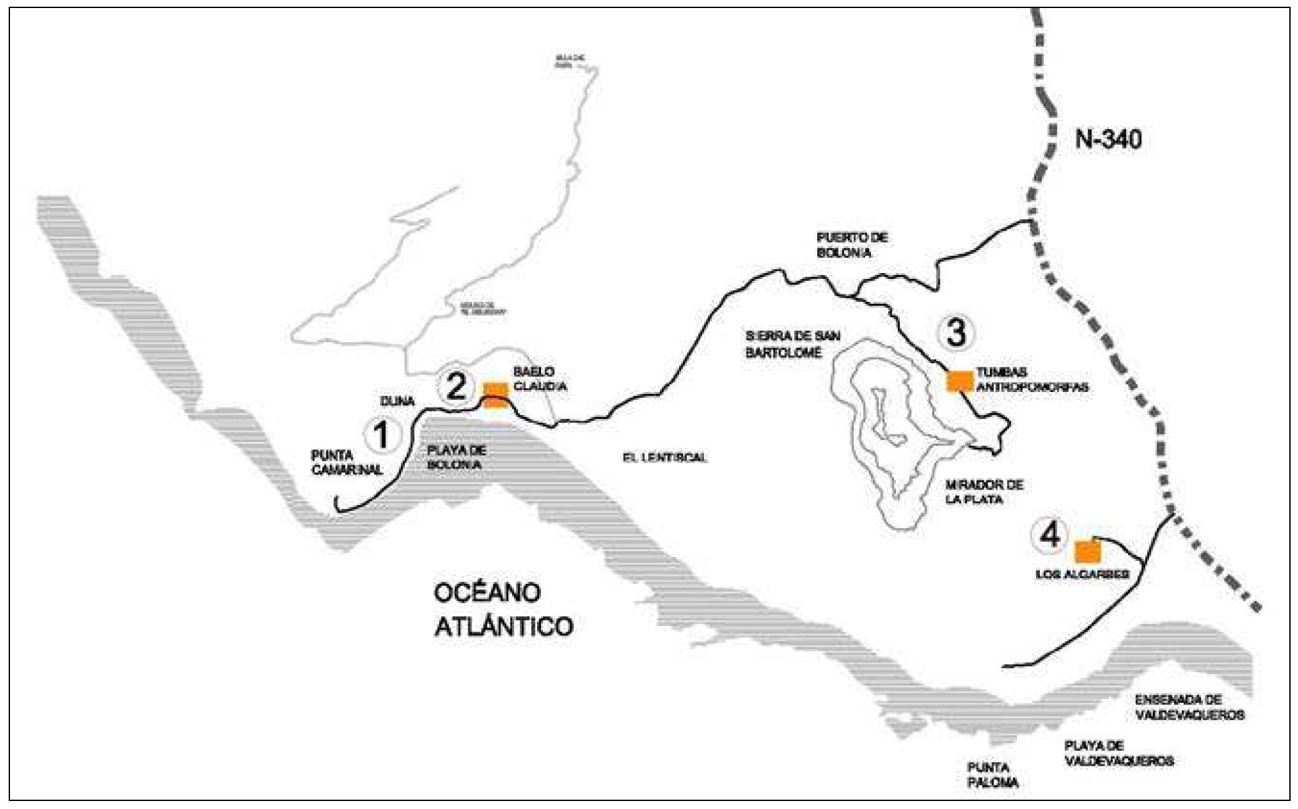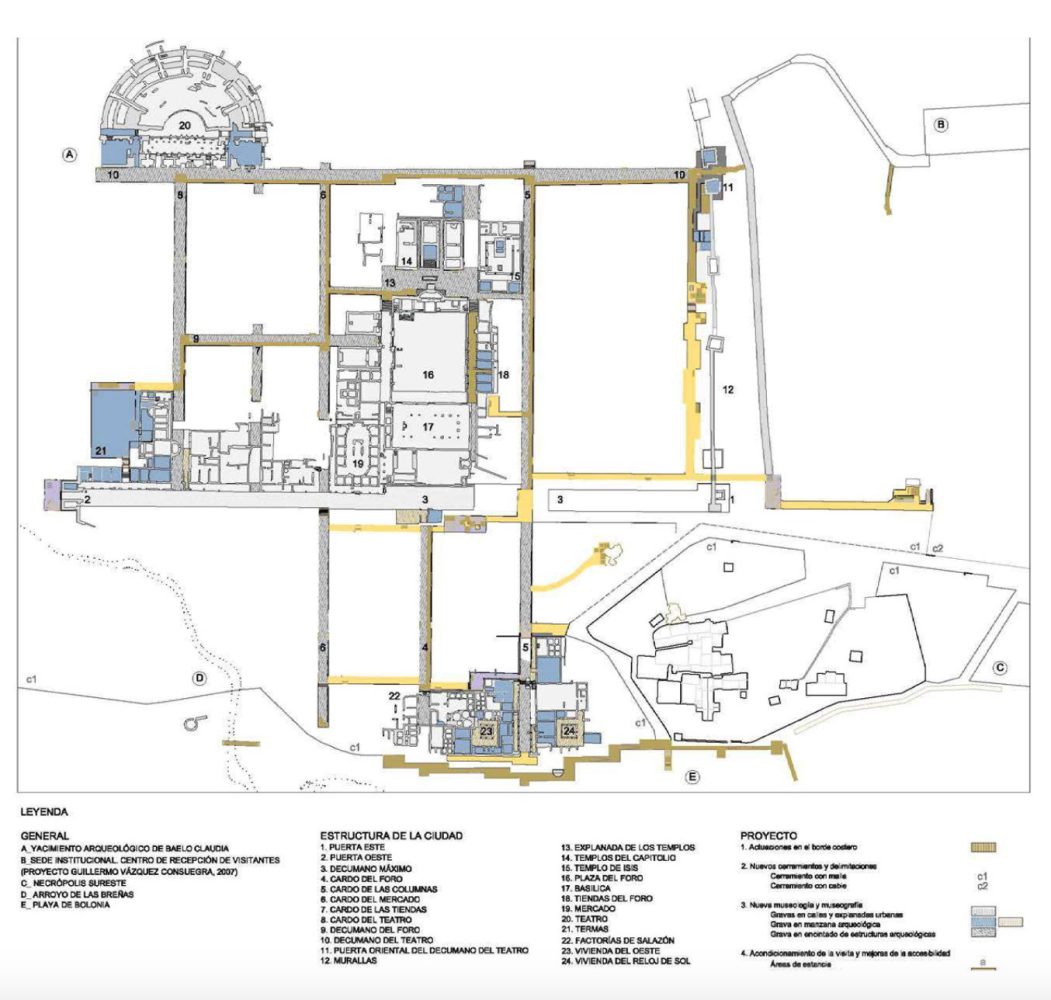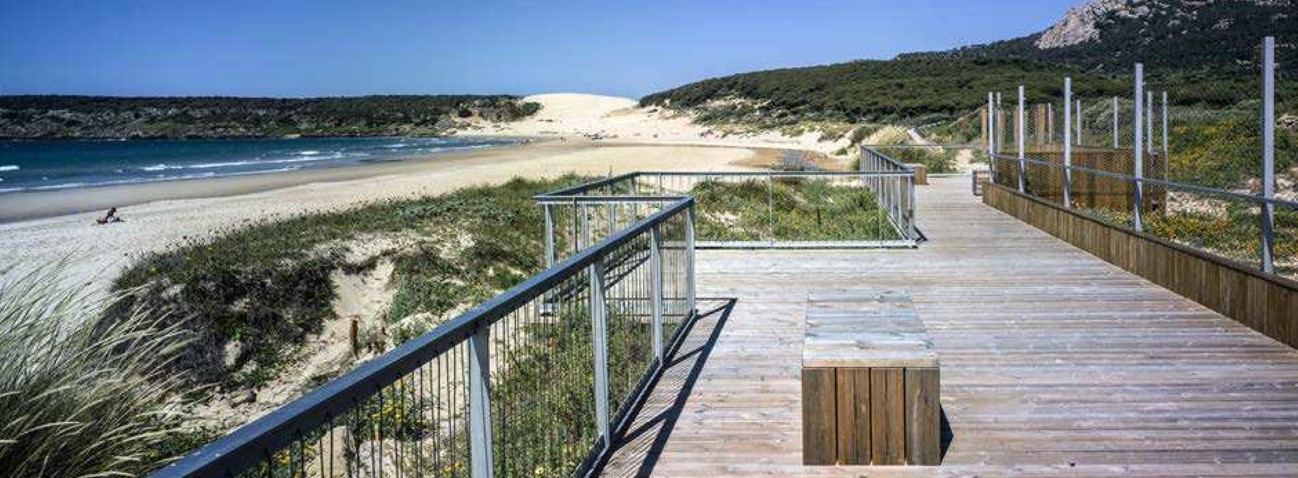Multi Scale Design Approach

Scheme of geographical identification of the areas intervened; Source: Projects Department, IAPH

Intervention on the Archaeological Site of Baelo Claudia. General Planimetry; Source: Projects Department, IAPH

Structure of the walkway over the dune of the coastal edge. Leisure areas and geometry translation of the shape of the cardo; Source: Projects Department, IAPH
The multiscale design approach in architecture and heritage shapes complex projects such as regional planning ones, in which city, infrastructure, building and public space are, at different scales, goals and economic and social resources. Besides, the historical characterization of the territory plays a role of the utmost importance within this design strategy, because each of its historic layers have determined patterns that must be part of the new urban decisions.
As a practical teaching model, it is based on open project statements that integrate different work scales. This approach, usually used as a model of analysis in social sciences, begins to be used in architecture and heritage teaching as a teaching method for design projects during the last decade.
In this specific field, projects and multiscale learning manage to work together on territorial problems, urban or rural, which reach the architectural detail.